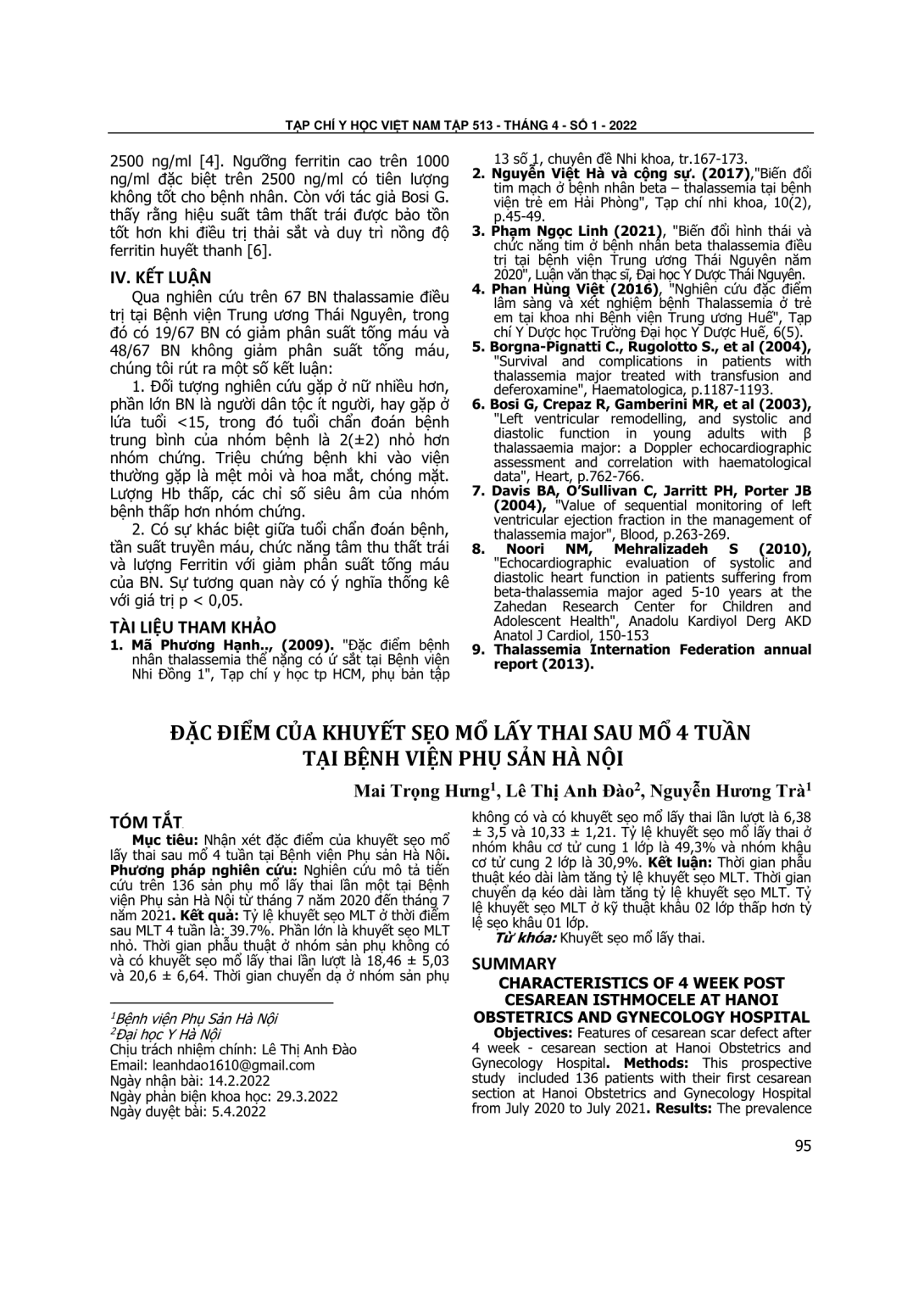
Nhận xét đặc điểm của khuyết sẹo mổ lấy thai sau mổ 4 tuần tại Bệnh viện Phụ sản Hà Nội. Phương pháp nghiên cứu: Nghiên cứu mô tả tiến cứu trên 136 sản phụ mổ lấy thai lần một tại Bệnh viện Phụ sản Hà Nội từ tháng 7 năm 2020 đến tháng 7 năm 2021. Kết quả: Tỷ lệ khuyết sẹo MLT ở thời điểm sau MLT 4 tuần là: 39.7%. Phần lớn là khuyết sẹo MLT nhỏ. Thời gian phẫu thuật ở nhóm sản phụ không có và có khuyết sẹo mổ lấy thai lần lượt là 18,46 ± 5,03 và 20,6 ± 6,64. Thời gian chuyển dạ ở nhóm sản phụ không có và có khuyết sẹo mổ lấy thai lần lượt là 6,38 ± 3,5 và 10,33 ± 1,21. Tỷ lệ khuyết sẹo mổ lấy thai ở nhóm khâu cơ tử cung 1 lớp là 49,3% và nhóm khâu cơ tử cung 2 lớp là 30,9%. Kết luận: Thời gian phẫu thuật kéo dài làm tăng tỷ lệ khuyết sẹo MLT. Thời gian chuyển dạ kéo dài làm tăng tỷ lệ khuyết sẹo MLT. Tỷ lệ khuyết sẹo MLT ở kỹ thuật khâu 02 lớp thấp hơn tỷ lệ sẹo khâu 01 lớp.
Features of cesarean scar defect after 4 week - cesarean section at Hanoi Obstetrics and Gynecology Hospital. Methods: This prospective study included 136 patients with their first cesarean section at Hanoi Obstetrics and Gynecology Hospital from July 2020 to July 2021. Results: The prevalence of isthmocele after 4 week - cesarean section is 39,7%. Most of cases are small scar. The surgical time in the group of no isthmocele patients and isthmocele was 6.38 ± 3.5 and 10.33 ± 1.21, respectively. The prevalence of cesarean scar defect in the group of single-layer closure of the hysterotomy incision was 49.3% and the group of double-layer closure was 30.9%. Conclusion: Longer surgery time increased the risk for isthmocele. Prolonged labor duration increased the rate of isthmocele. The risk of isthmocele in the double-layer closure of the hysterotomy incision is higher than those in the sinlge-layer closure.
- Đăng nhập để gửi ý kiến
